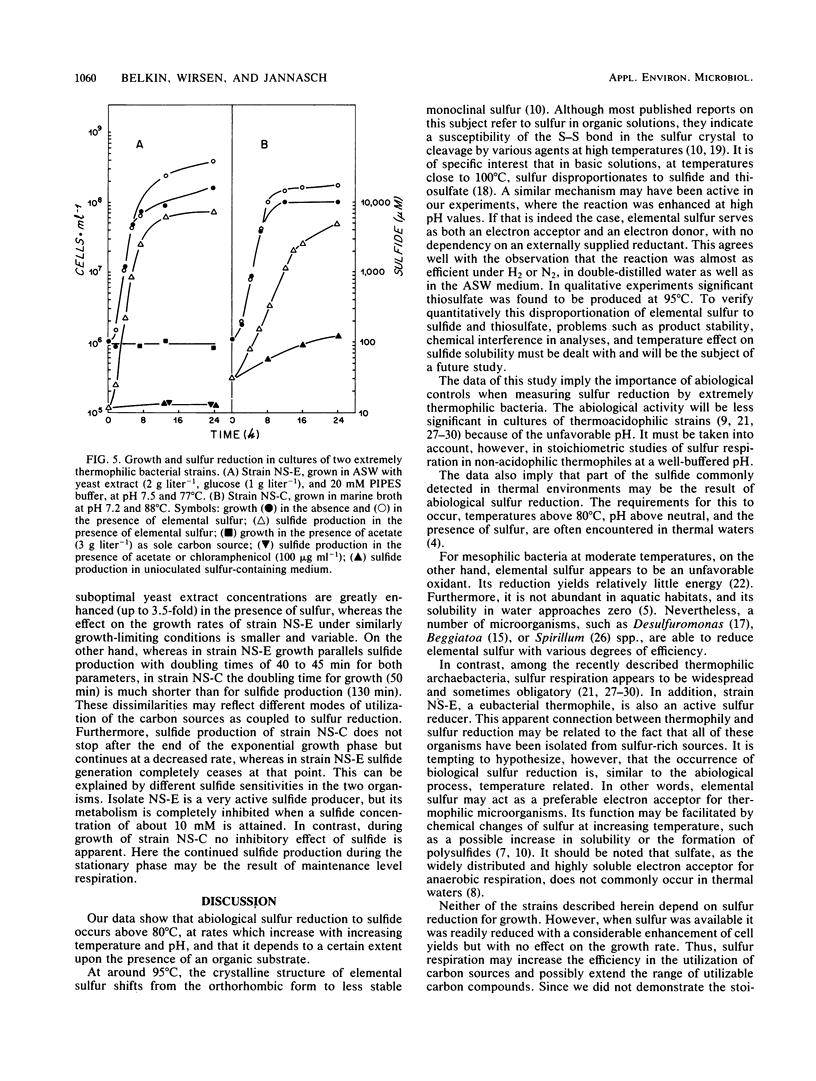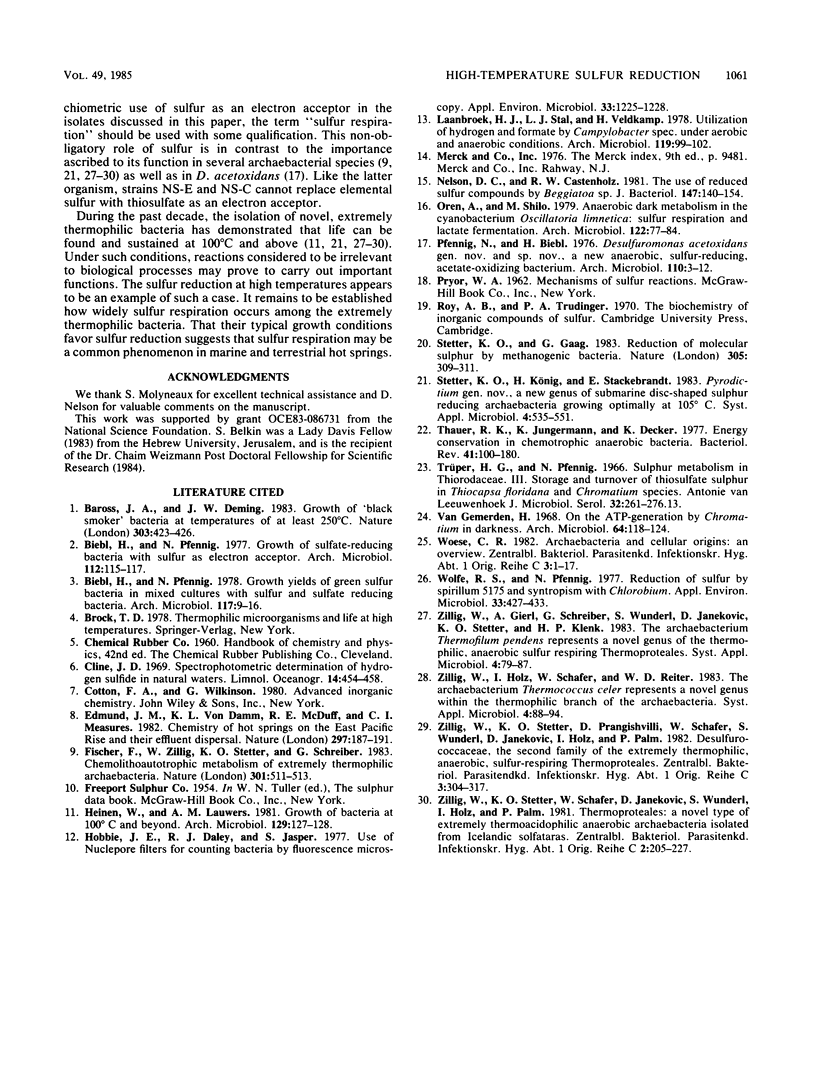Abstract
Reduction of elemental sulfur was studied in the presence and absencè of thermophilic sulfur-reducing bacteria, at temperatures ranging from 65 to 110°C, in anoxic artificial seawater media. Above 80°C, significant amounts of sulfide were produced abiologically at linear rates, presumably by the disproportionation of sulfur. These rates increased with increasing temperature and pH and were enhanced by yeast extract. In the same medium, the sulfur respiration of two recent thermophilic isolates, a eubacterium and an archaebacterium, resulted in sulfide production at exponential rates. Although not essential for growth, sulfur increased the cell yield in both strains up to fourfold. It is suggested that sulfur respiration is favored at high temperatures and that this process is not limited to archaebacteria, but is shared by other extreme thermophiles.
Full text
PDF




Selected References
These references are in PubMed. This may not be the complete list of references from this article.
- Biebl H., Pfennig Growth of sulfate-reducing bacteria with sulfur as electron acceptor. Arch Microbiol. 1977 Feb 4;112(1):115–117. doi: 10.1007/BF00446664. [DOI] [PubMed] [Google Scholar]
- Fischer F., Zillig W., Stetter K. O., Schreiber G. Chemolithoautotrophic metabolism of anaerobic extremely thermophilic archaebacteria. Nature. 1983 Feb 10;301(5900):511–513. doi: 10.1038/301511a0. [DOI] [PubMed] [Google Scholar]
- Hobbie J. E., Daley R. J., Jasper S. Use of nuclepore filters for counting bacteria by fluorescence microscopy. Appl Environ Microbiol. 1977 May;33(5):1225–1228. doi: 10.1128/aem.33.5.1225-1228.1977. [DOI] [PMC free article] [PubMed] [Google Scholar]
- Laanbroek H. J., Stal L. H., Veldkamp H. Utilization of hydrogen and formate by Campylobacter spec. under aerobic and anaerobic conditions. Arch Microbiol. 1978 Oct 4;119(1):99–102. doi: 10.1007/BF00407935. [DOI] [PubMed] [Google Scholar]
- Nelson D. C., Castenholz R. W. Use of reduced sulfur compounds by Beggiatoa sp. J Bacteriol. 1981 Jul;147(1):140–154. doi: 10.1128/jb.147.1.140-154.1981. [DOI] [PMC free article] [PubMed] [Google Scholar]
- Pfennig N., Biebl H. Desulfuromonas acetoxidans gen. nov. and sp. nov., a new anaerobic, sulfur-reducing, acetate-oxidizing bacterium. Arch Microbiol. 1976 Oct 11;110(1):3–12. doi: 10.1007/BF00416962. [DOI] [PubMed] [Google Scholar]
- Thauer R. K., Jungermann K., Decker K. Energy conservation in chemotrophic anaerobic bacteria. Bacteriol Rev. 1977 Mar;41(1):100–180. doi: 10.1128/br.41.1.100-180.1977. [DOI] [PMC free article] [PubMed] [Google Scholar]
- Trüper H. G., Pfennig N. Suphur metabolism in Thiorhodaceae. 3. Storage and turnover of thiosulphate sulphur in Thiocapsa floridana and Chromatium species. Antonie Van Leeuwenhoek. 1966;32(3):261–276. doi: 10.1007/BF02097469. [DOI] [PubMed] [Google Scholar]
- Wolfe R. S., Penning N. Reduction of sulfur by spirillum 5175 and syntrophism with Chlorobium. Appl Environ Microbiol. 1977 Feb;33(2):427–433. doi: 10.1128/aem.33.2.427-433.1977. [DOI] [PMC free article] [PubMed] [Google Scholar]
- van Gemerden H. On the ATP generation by Chromatium in darkness. Arch Mikrobiol. 1968;64(2):118–124. doi: 10.1007/BF00406970. [DOI] [PubMed] [Google Scholar]


